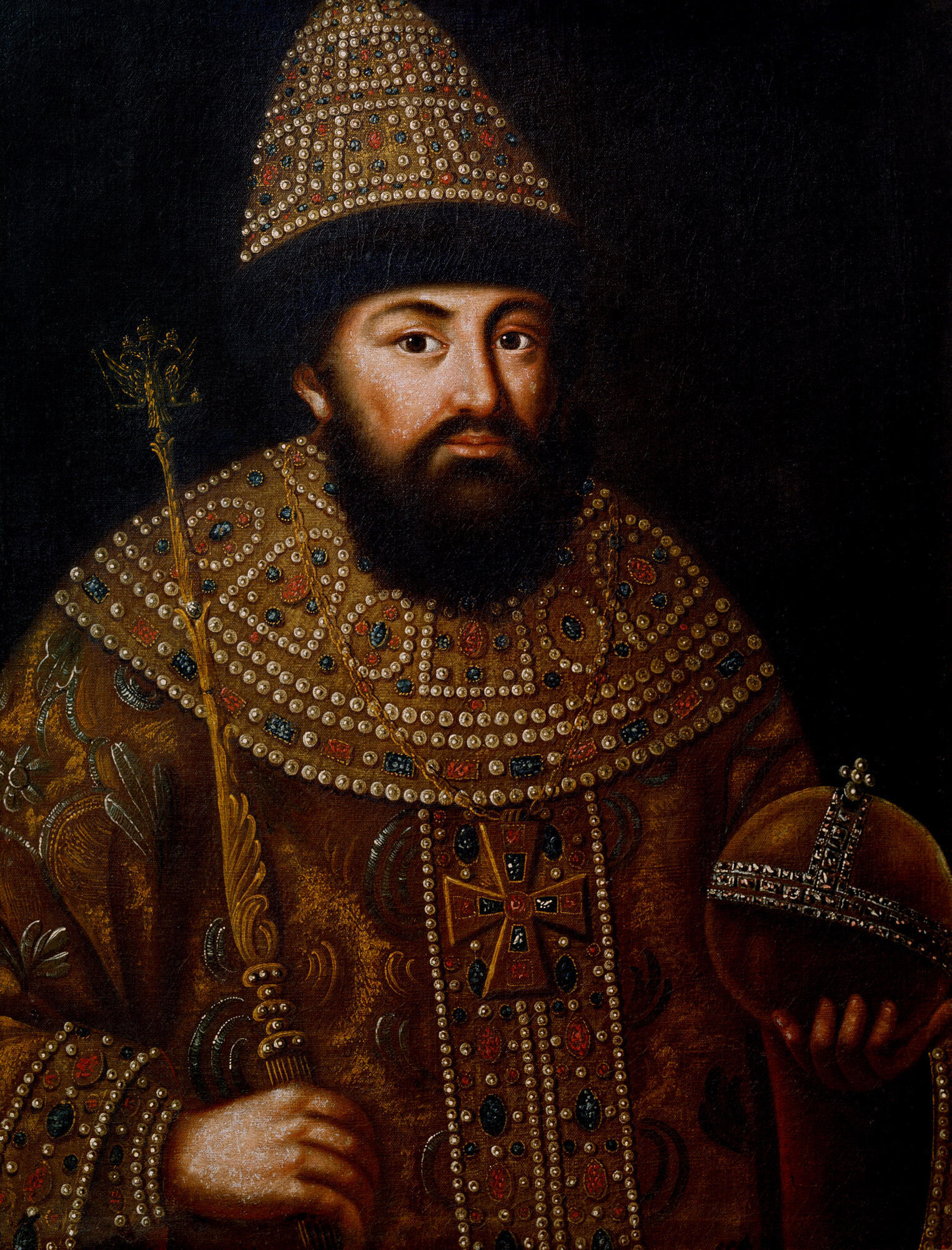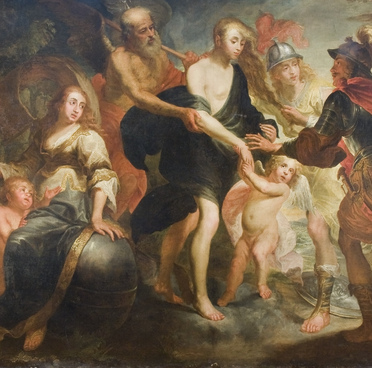The portrait of Tsar Alexey Mikhailovich, the father of Peter the Great, is created in the late 17th century by an unknown artist of the Studio in the Armory Chamber of the Moscow Kremlin. A similar image, sketched from nature, was named parsuna at that time. The new oil painting technique, instead of traditional iconographic tempera, allowed an artist to reproduce the material diversity of the subject world — the surface of brocade, the shine of gold and jewels, and fluffiness of the fur. However, the echo of iconography writing is still noticeable in the flatness of the image, the tension of the hero’s pose, in the detailed conveyance in his dress pattern.
Alexey Mikhailovich, the second Russian tsar from the Romanov dynasty, ascended the Moscow throne at 16, having lost his parents. He was one of the most educated people of his time, a meek, good-natured, and religious man. The people loved the Tsar, and he went down in history known as the “Quietest”. Alexey Mikhailovich is depicted in the so-called immense tsarist attire. It included all the regalia of a king: the king’s caftan, the famous Monomakh’s hat (royal crown), barmas (wide shoulder or wide collar with gems sewn on it, worn over the front dress), as well as a scepter, orb, and chain with a cross.
The royal crown is a symbol of the highest state power. Beginning with the reign of Ivan III, it was a gold hat, which was called “Monomakh hat”. It was crowned all Russian monarchs from 1498 to 1682. Under Peter the Great, when Russia was proclaimed an empire, instead of crowning on the kingdom, it introduced coronation rite.
The scepter was a sign of power even in the pharaohs, existed among Greeks, Roman kings, and emperors. It was used in the coronation of sovereigns in all European countries. The scepter entered into the attributes of Russian tsarist power in 1584 at the crowning of Feodor I Ioannovich.
Orb is the third symbol of the monarch’s power and its obligatory attribute. It was a golden ball with a crown or cross — a sign of domination above the earth, a designation of power entrusted by the Lord.
Alexey Mikhailovich, the second Russian tsar from the Romanov dynasty, ascended the Moscow throne at 16, having lost his parents. He was one of the most educated people of his time, a meek, good-natured, and religious man. The people loved the Tsar, and he went down in history known as the “Quietest”. Alexey Mikhailovich is depicted in the so-called immense tsarist attire. It included all the regalia of a king: the king’s caftan, the famous Monomakh’s hat (royal crown), barmas (wide shoulder or wide collar with gems sewn on it, worn over the front dress), as well as a scepter, orb, and chain with a cross.
The royal crown is a symbol of the highest state power. Beginning with the reign of Ivan III, it was a gold hat, which was called “Monomakh hat”. It was crowned all Russian monarchs from 1498 to 1682. Under Peter the Great, when Russia was proclaimed an empire, instead of crowning on the kingdom, it introduced coronation rite.
The scepter was a sign of power even in the pharaohs, existed among Greeks, Roman kings, and emperors. It was used in the coronation of sovereigns in all European countries. The scepter entered into the attributes of Russian tsarist power in 1584 at the crowning of Feodor I Ioannovich.
Orb is the third symbol of the monarch’s power and its obligatory attribute. It was a golden ball with a crown or cross — a sign of domination above the earth, a designation of power entrusted by the Lord.



